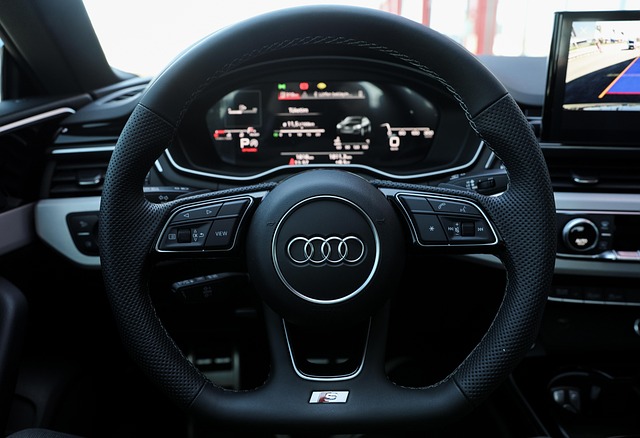Looking to register your car in California? This comprehensive guide walks you through every step, from understanding eligibility requirements to completing the application process at your local DMV office. We’ll cover gathering essential documents, including proof of insurance and vehicle ownership, as well as crucial processes like dmv VIN verification and vehicle inspection. By following these steps, you’ll be on your way to a seamless registration experience in California.
- Understand Eligibility Requirements for Car Registration
- Gather Necessary Documents for California DMV
- Complete Application Process at Your Local DMV Office
- Perform Vehicle Inspection and VIN Verification
- Pay Registration Fees and Obtain License Plate
Understand Eligibility Requirements for Car Registration

Before you begin the registration process, it’s crucial to understand if your vehicle meets California’s eligibility requirements. All vehicles operated on California roads must be properly registered and insured. To register, your car needs a valid Vehicle Identification Number (VIN) and must pass a safety inspection known as a smog test. The California Department of Motor Vehicles (DMV) conducts these inspections, ensuring that all vehicles meet federal emissions standards.
Additionally, for a smoother registration experience, consider using a mobile VIN verifier. These services allow you to quickly verify your vehicle’s history and emissions compliance right from the comfort of your home or on-the-go. A valid mobile vin inspection can save you time and potential headaches during the registration process at the DMV.
Gather Necessary Documents for California DMV

Before heading to the California Department of Motor Vehicles (DMV) office, ensure you gather all the essential documents required for car registration. This includes your vehicle’s registration certificate from the previous state, a valid driver’s license or ID card, and proof of insurance. Additionally, you’ll need to provide a complete set of documents for DMV vin verification, which is a crucial step in the registration process. A mobile vin verifier can be handy here – it allows you to quickly and conveniently conduct this inspection before visiting the DMV.
Among other things, make sure you have your vehicle’s title, if applicable, as well as any loan or lease documents that are related to the car. If transferring a title from out of state, you might need additional paperwork. A mobile vin verification service can assist with this, offering a quick and efficient way to confirm your car’s history before completing the registration process.
Complete Application Process at Your Local DMV Office

To complete the registration process for your car in California, you’ll need to visit your local Department of Motor Vehicles (DMV) office. Here, you’ll submit essential documents and undergo critical procedures like a DMV VIN verification. This step ensures that the vehicle’s identification number (VIN) is accurate and matches the details on record. A mobile vin verifier can assist in this process by providing quick and convenient VIN inspection services, allowing for a smoother experience at the DMV.
During your visit, you’ll need to fill out an application form, providing personal information and vehicle details. An officer will guide you through the process, which includes verifying your car’s documentation, conducting a visual inspection, and checking the vehicle’s history. Remember to bring all necessary documents, including proof of ownership, registration, insurance, and identification. Properly completing these steps is vital for a seamless car registration experience in California.
Perform Vehicle Inspection and VIN Verification

Before you can register your vehicle in California, it’s crucial to ensure that your car meets all safety and emissions standards. This process starts with a thorough DMV vin verification and VIN inspection. The Department of Motor Vehicles (DMV) requires these checks to confirm the identity and condition of your vehicle. A mobile vin verifier can be a convenient option, as it allows you to complete this step without visiting a DMV office.
During the vin inspection, a trained professional will verify key information about your car, including its make, model, year, and specific identification number (VIN). This process not only ensures compliance with California’s regulations but also helps protect against fraud and facilitates efficient vehicle registration.
Pay Registration Fees and Obtain License Plate

After successfully passing the vehicle inspection, the next step in registering your car in California involves paying the registration fees and obtaining license plates. You can pay the required fees online, over the phone, or in person at a DMV office. The amount you’ll need to pay depends on various factors like the type of vehicle, its age, and any additional fees for specialized vehicles.
Once your payment is processed, you’ll be issued a set of license plates that must be displayed on your vehicle. For convenience, California offers a mobile vin inspection and verification service, allowing you to complete these steps without visiting a DMV location. This service simplifies the process by enabling a licensed inspector to perform a remote vin check, ensuring your vehicle’s information aligns with the state’s records.
Registering a car in California is a straightforward process, ensuring your vehicle is safe for the road. By understanding the eligibility requirements, gathering the needed documents, and completing the application at your local DMV, you’re well on your way. Don’t forget to undergo a vehicle inspection and VIN verification, crucial steps that guarantee your car meets safety standards. Once approved, pay the registration fees and obtain your license plate, marking the successful conclusion of this essential task. Remember, a properly registered vehicle is key to enjoying seamless driving experiences in the Golden State.
